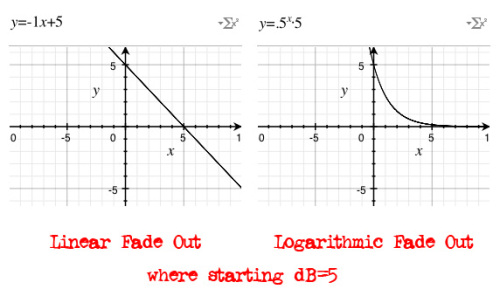I had a very frustrating conversation the other day about a fade out on a song. I thought it sounded too fast. To me, it sounded very linear. I was trying to explain it should be a logarithmic fade out. Sarcastically, I was told I should teach a class on the subject if I flippin’ knew so much. So fuck it, class is in session. When speaking about audio, what does one mean when using the terms “linear” and “logarithmic?”

For a linear fade out, a linear equation of the dB decrease could be shown simply as y=e*x+dB, where e is a negative number. That’s a straight line heading downward. When speaking about “logarithms” in audio applications, though, it’s actually describing several things: exponential and logarithmic curves, and their reverse functions. For a “logarithmic” fade out, the function would be y=ex*dB, where e is a number between 0 and 1; that is an exponential function showing decay. For fade ups, the function can be reversed to y=ex/dB to show an exponential increase in volume. Fucking confused, yet? YES!*
